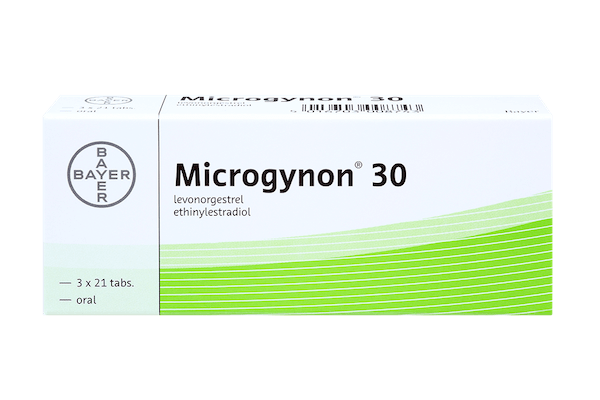The world of contraception is sometimes viewed as a confusing minefield – but it doesn’t have to be! There are various types of contraceptive options available based on your individual needs and they can be classed into different categories.
There are STI protective methods, short-acting methods, long-acting methods and the option of sterilisation if you are sure that you want a more permanent solution. In this post, we will cover the two main contraceptive pill types available – the progestogen-only and combined pills.

Progestogen-Only Pill
As it says on the tin, the progestogen-only pill (POP) contains a synthetic hormone called progestogen which mimics the hormone progesterone. It commonly works by thickening your cervical mucus and preventing sperm from reaching an egg, therefore preventing pregnancy. Certain types of POP can also work by stopping ovulation (1).
The POP needs to be taken once daily to work and there are 28 pills supplied in each blister pack. There is no break between packs, so as soon as one finishes, you are to start the next pack the next day.
There are 2 main types of POP – the 3-hour window POP (the traditional POP) and the 12-hour window POP (the desogestrel POP, e.g. Cerazette).
This means that depending on which type you have, you must take the pill within 3 hours of the same time every day. Most importantly, follow the instructions in your pill packet and given to you by your healthcare provider.
Best advice? When you start your first pack, choose a time of the day convenient to you and set a discreet alarm on your phone to get yourself into the habit.
You can start the POP on any day of your menstrual cycle, however if you start it between days 1-5 (first days of your period), you will be protected against pregnancy. You won’t be protected against STI’s though, so can still choose to wear a condom.
If you have a short cycle or start post day 5, you will not be protected from pregnancy until you have taken the pill for 2 days, so you may need to use additional contraception during that time.
The POP can have a varied effect on periods based on the individual user. Some people report their periods becoming more or less frequent, whereas some report the frequency staying the same, but periods becoming lighter or heavier. Some people report their periods stopping altogether! Give it 3-4 months for your body to get used to the pill before being sure on how it works for you (2).
- Benefits of the POP:
- It’s more than 99% effective if taken correctly, meaning that less than 1 in 100 women using it will get pregnant in 1 year.
- With typical use (the way people tend to take it in real life) this is 91%.
- It’s also a good alternative to oestrogen-containing contraceptives for those who cannot use them for health reasons. If you are aged 35 and over and a smoker, the POP is safe for use where oestrogen-containing contraceptives may not be the best option.
- Disadvantages of the POP:
- You must remember to take it every day at roughly the same time, or else it isn’t as effective!
- Also, the potential for unscheduled bleeding may not be appealing to everyone.
- Some potential side effects include spots and breast tenderness, but these usually occur in the first few months and tend to resolve.

Combined Contraceptive Pill
The combined oral contraceptive pill (COCP) contains both artificial progesterone and artificial oestrogen. The COCP works by preventing ovulation, thickening cervical mucus and making the lining of the womb thinner (3).
There are many different subtypes of COCP, with each containing a different combination of artificial hormones. For example, commonly used pills include Microgynon and Rigevidon, which both contain the same oestrogen/progestogen combination.
However, there are also many other types, such as Yasmin which contains the same progestogen, but a different oestrogen. All this means, is that doctors can offer patients different pills if one type doesn’t suit the patient for whatever reason (4). Discuss all your concerns with your doctor, like whether you are worried about acne or avoiding weight gain and they can help choose the right option for you.
The most common type of COCP (and usually the first option your doctor will recommend) is the 21-day pill group. Each pill has the same amount of hormone in it, with one to be taken a day for 21 days. Then, there is a 7-day break where no pills are to be taken. In this break, usually you will have a breakthrough bleed. On the 8th day you start the next pack, whether you are still bleeding or not.
Like the POP, if you take the COCP from day 1-5 of your cycle you will be protected from pregnancy straight away. However, if you start after day 5 with the COCP, you will not be protected for an additional 7 days so will need to ensure you are using additional methods of contraception such as condoms or abstaining during that time.
Generally, the break week provided by COCP allows for periods to become more regular – usually a bonus for those who otherwise may not have had regular periods. People report that their periods are also lighter and less painful when using the COCP (5).
- Benefits of the COCP:
- Like the POP, the COCP is 99% effective at preventing pregnancy when taken correctly.
- It also doesn’t interrupt the flow of sex due to already being in the system!
- Unlike the POP, there is a bit more flexibility about when you take it, although it is still important to be as consistent as you can, but a few hours variation either side wont affect how well these pills work as contraception.
- Due to the artificial oestrogen, it has been shown to improve acne in some women.
- The COCP can also help ease symptoms of PMS and can slightly reduce the risk of ovarian, uterine and colon cancer.
- Disadvantages of the COCP:
- The main issue is that it increases the risk of getting a blood clot, although how much does depend on which pill you take.
- This means that the combined pill isn’t suitable for smokers or those who stopped less than a year ago.
- If you are over aged 40, your doctor may prefer to discuss other forms of contraception. Although the combined contraceptive pill can be prescribed at any age, the risk of blood clots increases so it is important to be aware of all of your options.
- Women with certain health conditions such as migraines or blood clotting disorders should not use the COCP.
- This is because It has been linked to an increased risk of stroke, deep vein thrombosis and other clotting risks – this risk is extremely small, but always best to check with your doctor that they are happy to prescribe you this type of pill.
- The main issue is that it increases the risk of getting a blood clot, although how much does depend on which pill you take.

To Summarise
Both the POP and COCP are short-acting methods of the contraceptive pill that are extremely effective when used correctly. They work in similar ways, with the main differences being the way they are taken; either taking them every day without a break (POP) or for 3 weeks with a 1-week break (COCP). Also, the hormone content differs between the two, so if for whatever reason you weren’t suitable to have the COCP, the POP is usually a safe alternative.
However, it is a commitment to remember to take your pill at roughly the same time every day. If you miss your pills and do not remember to take your next one within a suitable window, you risk having an unplanned pregnancy. If you can’t commit to this, you may need to consider a long-acting method of contraception such as the copper coil (IUD) or implant, to name a few.
Some people also dislike the idea that they do not have periods whilst they take the contraceptive pills; as you do not ovulate, if you experience any bleeding this would be called a withdrawal bleed. Although these bleeds are healthy, if you prefer to observe your natural menstrual cycle, then it may be better to choose a hormone-free method of contraception.
It is also worth considering when you are planning to conceive, because it can take 6-9 months after stopping the contraceptive pills for your cycle to regulate again (although many find it takes less than this, and they are able to get pregnant right away).
Get in touch with your GP or nearest family planning/sexual health clinic for a consultation and further information to decide what method of contraception may be best for you.
REFERENCES
- The progestogen-only pill [Internet]. NHS choices. NHS. Available from: https://www.nhs.uk/conditions/contraception/the-pill-progestogen-only/
- Progestogen only pill [Internet]. SH:24. Available from: https://sh24.org.uk/contraception/progestogen-only-pill
- Combined pill [Internet]. NHS choices. NHS. Available from: https://www.nhs.uk/conditions/contraception/combined-contraceptive-pill/
- Contraception – combined hormonal methods: Scenario: Combined oral contraceptive [Internet]. NICE. Available from: https://cks.nice.org.uk/topics/contraception-combined-hormonal-methods/management/combined-oral-contraceptive/#starting-a-coc-pill
- Combined pill [Internet]. SH:24. Available from: https://sh24.org.uk/contraception/combined-pill
